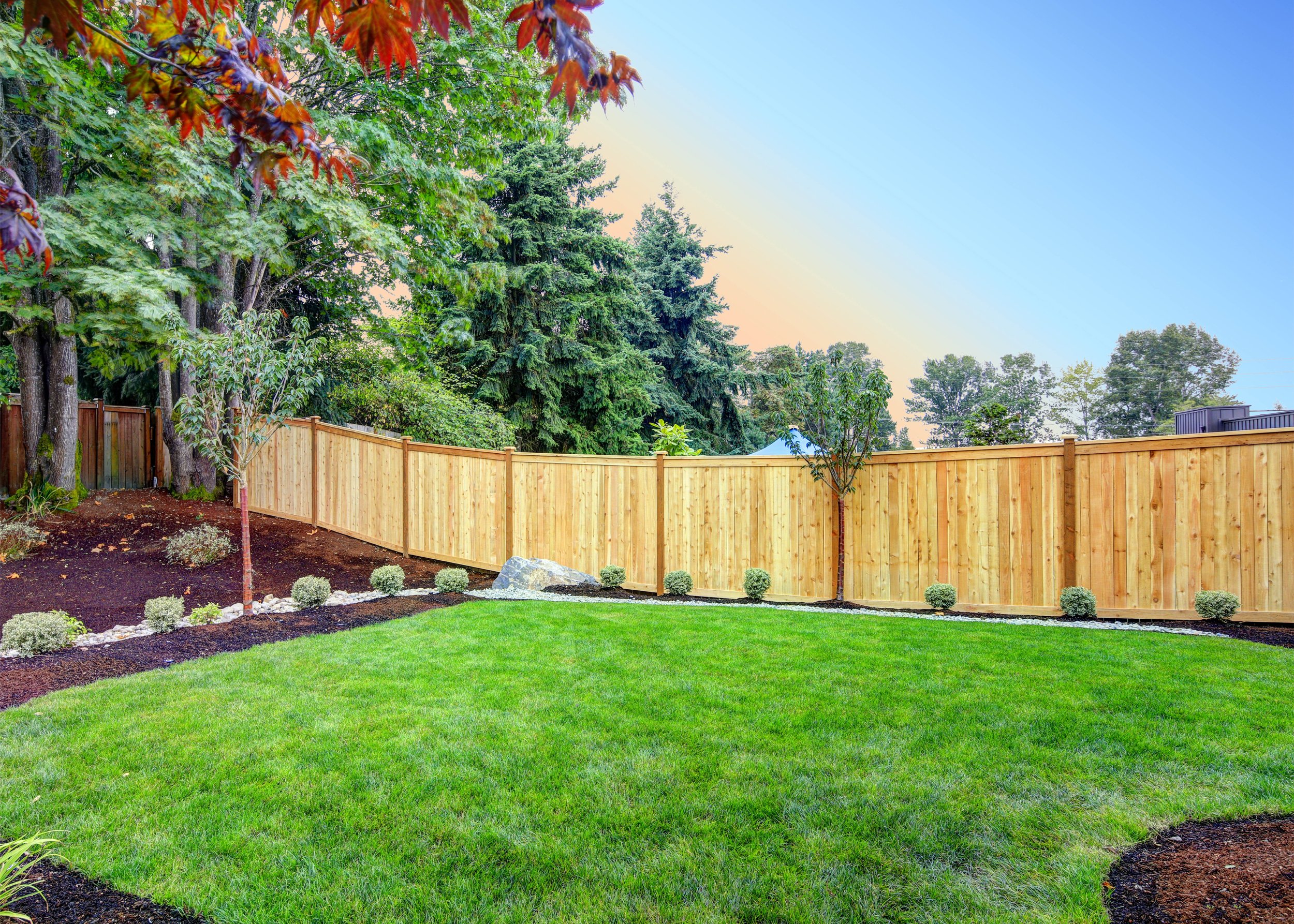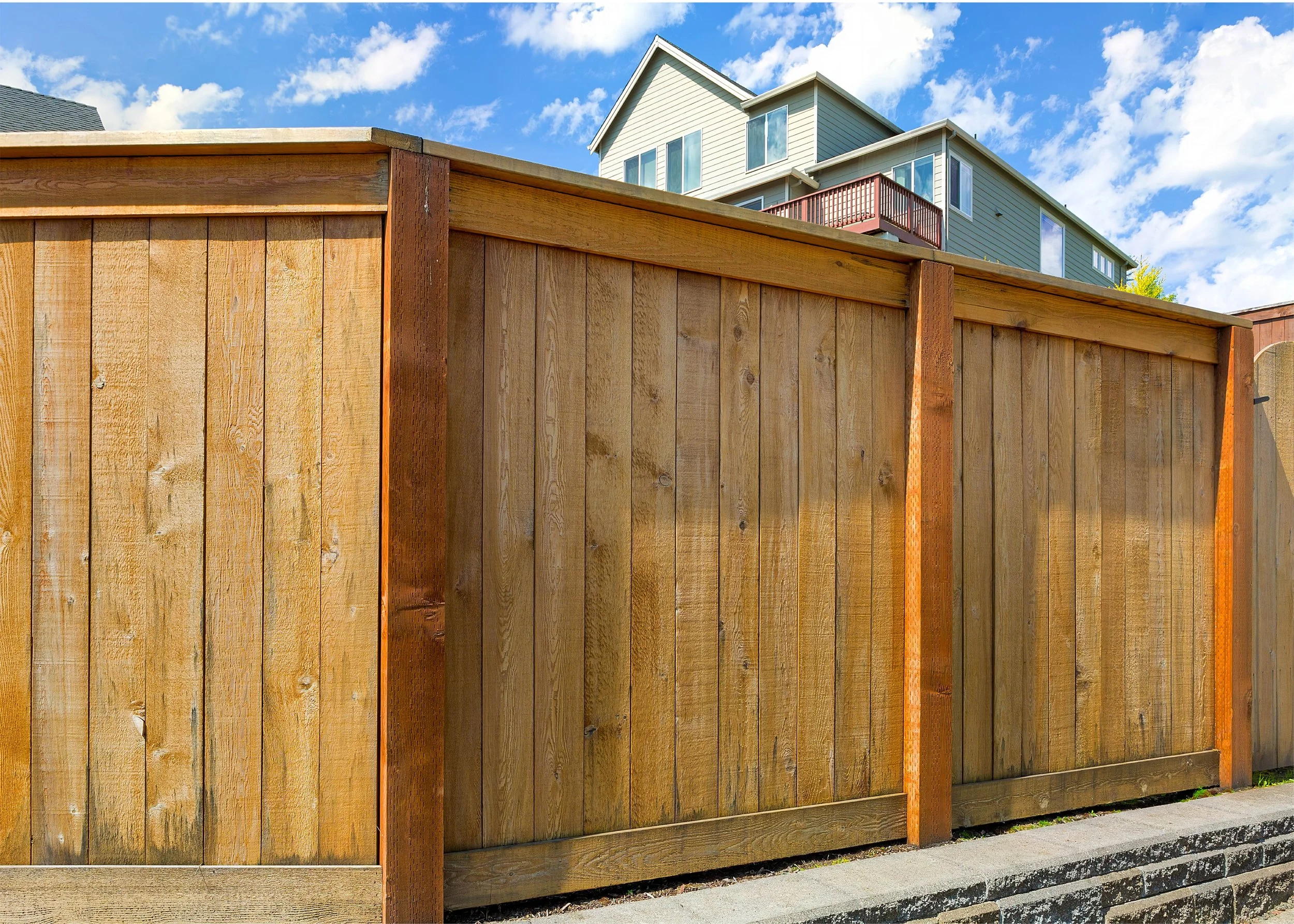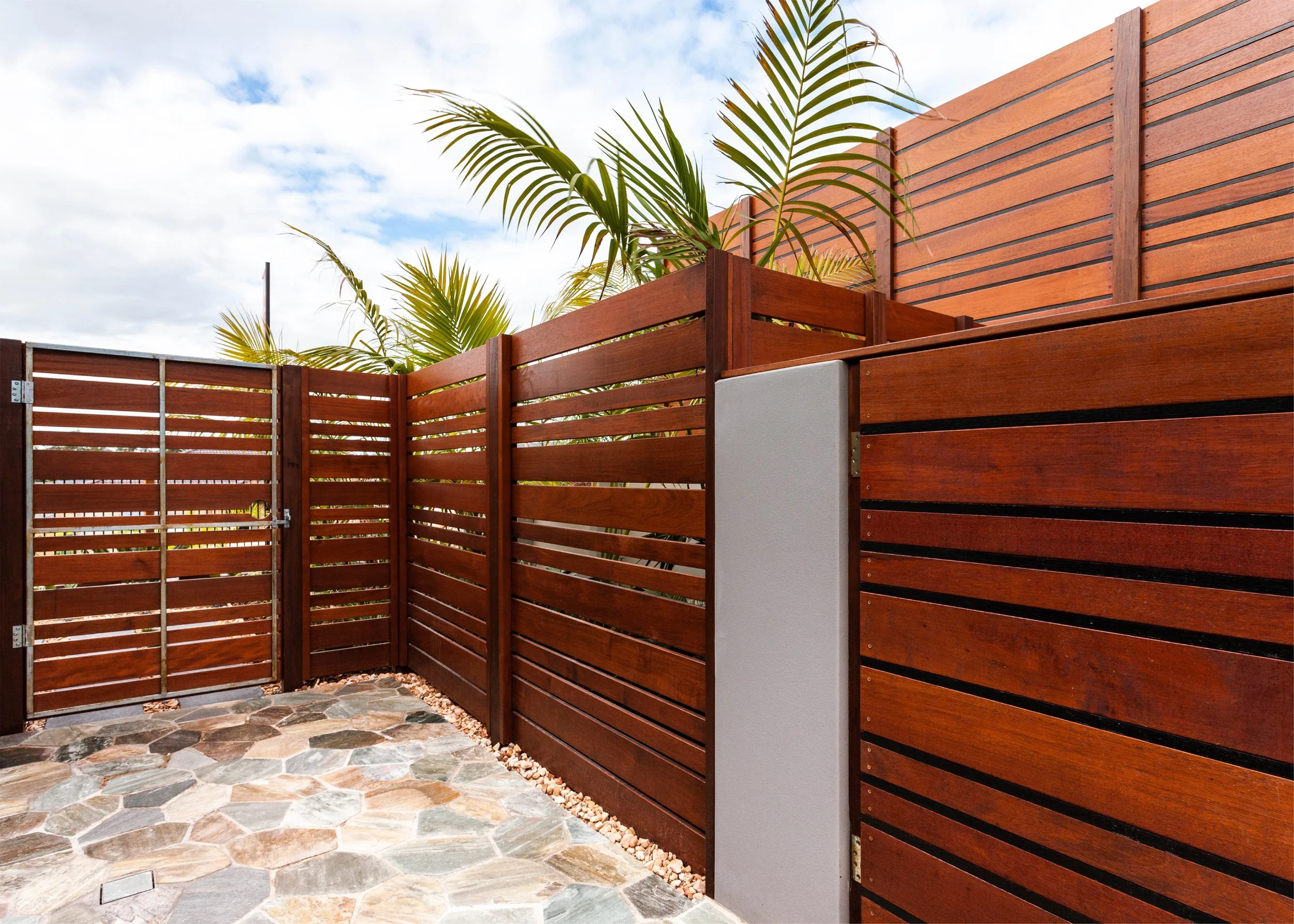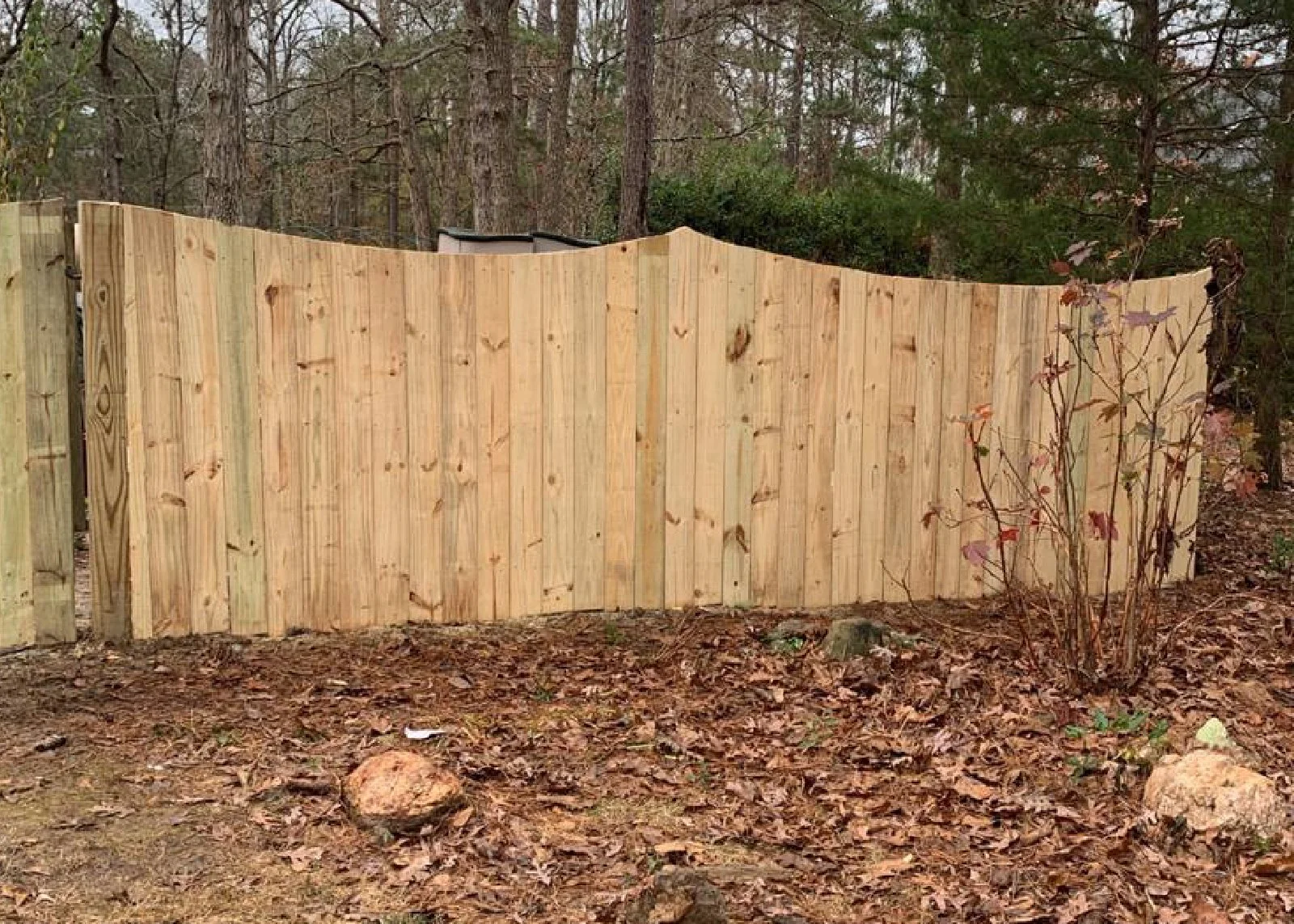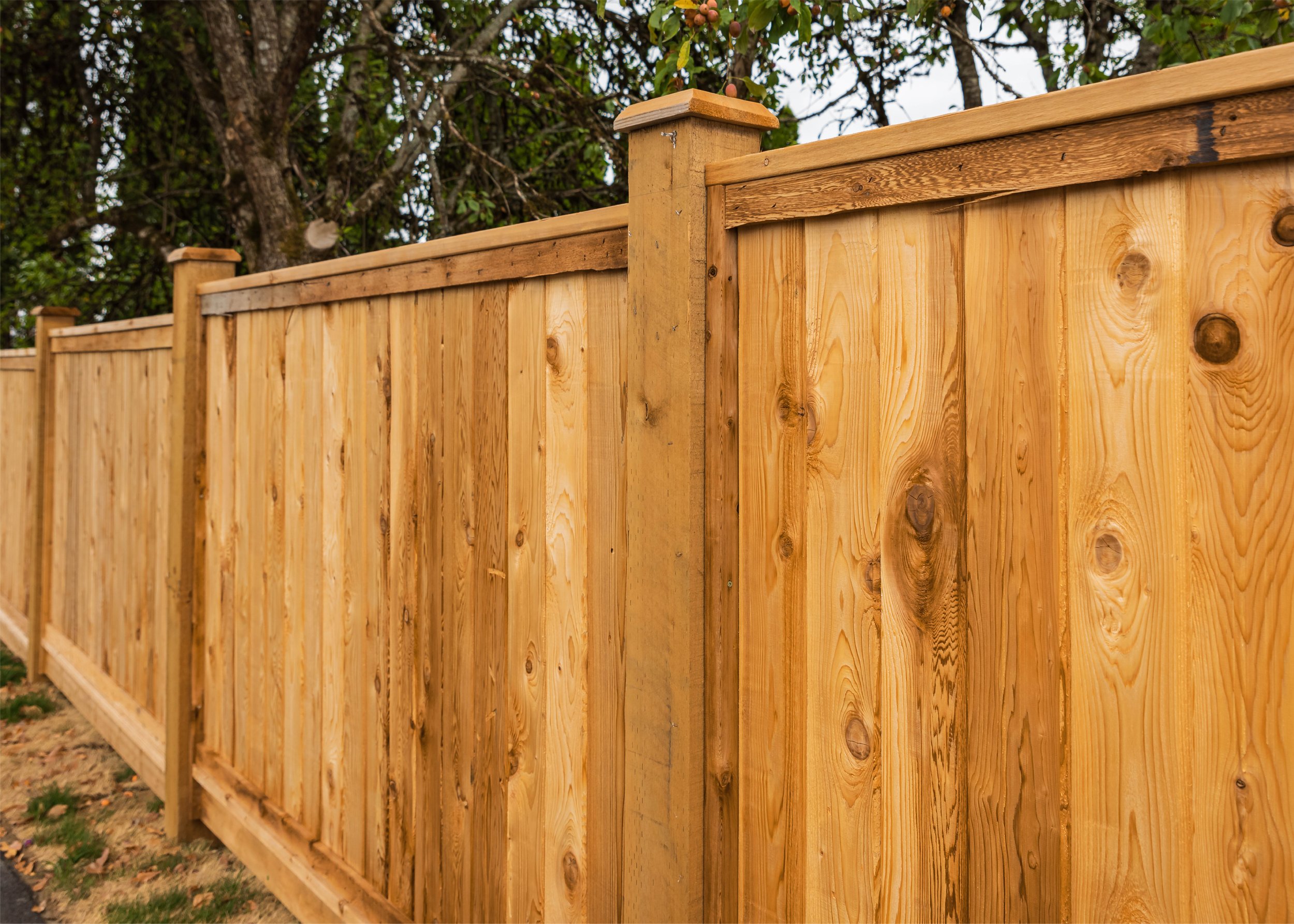Wood Privacy Fences: 8 Reasons You’ll Want One
A tall wooden privacy fence with a beautifully landscaped backyard creates a backyard paradise.
Outdoor living has always been important, but over the past few years, it’s been an even greater necessity to have some private space where you and your family and friends can hang out without having to worry about neighbors.
Even more importantly, building a privacy fence can provide a lot more security for your pets, children, and property. But we’ll get into all the amazing benefits of a privacy fence in just a bit.
In this post, we’ll discuss all your biggest questions and concerns about wood privacy fences.
What is a privacy fence, exactly?
What are the 8 benefits of a privacy fence?
What are the pros and cons of wood fences?
How long do wood fences last?
Great privacy fence ideas
What kind of wood is best for a wood privacy fence?
How much does a wood privacy fence cost?
What other types of wood fences are there?
How long do wood fences last?
What kind of maintenance do wood fences need?
What are some alternatives to a wood privacy fence?
Looking for a fence builder near you in the Columbia, SC area? We can help.
At Boots On Enterprises, we know all about building a wood fence. And we would absolutely love to build a beautiful new wood fence for you.
Just contact us for a FREE estimate today.
Phone: 803-521-4978
Email: bootsonenterprises@gmail.com
A beautiful wood privacy fence with a cap board, trim board, and a kickboard.
What is a privacy fence?
A good definition of a privacy fence is a fence that obstructs the view from one side to the other. It is generally at least 6 feet tall. And usually has very few or no gaps.
A privacy fence has several primary components:
Posts — Wood fence posts are generally set in concrete for strong support for the rest of the fence.
Backer rails — Fence backer rails run parallel to the ground and connect posts for greater structural support.
Pickets/slats/boards — Fence pickets make up the bulk of the fence and attach to the backer rails. (Or prebuilt fence panels can be used.)
Gates — Metal or wood fence gates allow access in and out of the yard.
Rot board — Also called a kickboard or mud board, this board goes along the bottom of the fence panel to protect from water damage and to improve the appearance of the fence.
Cap board — This board goes along the top of the fence for a finishing touch.
Trim board — Trim pieces on the face of the fence add style and polish.
What are the benefits of a privacy fence?
All fences have some benefits. But what are the reasons to build a privacy fence, in particular?
There are eight main benefits of a privacy fence.
Privacy from neighbors and passersby.
Security for children.
Protection from liability (ie: if you have a pool).
Safety for pets.
Keeps wild animals/other animals out.
Helps keep neighbors friendly.
Some wind and noise protection.
Boosts curb appeal.
One purpose of a privacy fence is to prevent outsiders from seeing into your yard as much as possible so that you and your family can enjoy privacy even outdoors. Then everyone in the neighborhood doesn’t have access to see whether you are home, what you are doing, or monitor your family.
A privacy fence also makes a great option for families with small children because the kids can’t get out and other people won’t be able to get into your yard. This provides a great deal of security for your family. With a good fence, you can enjoy being outside with the kids and let them run around, play in the sandbox, or play on a playground without worrying that they might run away.
Most home insurance companies require a secure fence that reaches a certain height to surround a pool area to keep children and other people away from the “attractive nuisance.” The fence helps to prevent accidental drownings or injuries and may also be required to have a lock.
Most dog owners don’t want to have to keep their dogs on a leash or chain when they are in the backyard. Having a sturdy privacy fence gives your dogs the freedom to run around in the backyard without you having to worry about them getting out, getting lost, or finding trouble.
A tall privacy fence is especially great because the dogs can’t see people walking past so that can reduce a lot of barking. Plus, the height of the fence will be able to contain even large dogs who may be able to jump over a regular chain-link fence. And for smaller dogs, the boards are too close together for them to be able to shimmy their way through the fence.
Another big plus with a tall fence that has no gaps between the boards is that deer, other dogs, coyotes, foxes, and other animals will have a much harder time getting into your yard.
Regarding neighbors, we all know the saying, “Good fences make good neighbors.” It’s so true! Especially in neighborhoods where houses are close together. Everyone needs a space to go outside where they don’t feel they are being watched. Without a fence, it’s easy for disputes and hard feelings to develop between neighbors. But with a fence for privacy, keeping a civil relationship between closely situated neighbors is a lot easier.
A privacy fence with its’ tightly connected boards absorbs sound, to some degree, which can help with friction with the neighbors, too. And it blocks the wind, which may be helpful, especially in the winter.
The icing on the cake? A wood privacy fence is beautiful! Especially when there is attractive landscaping and thoughtful fence design.
A vertical side-by-side wood fence surrounds a large backyard with landscaping.
What are the pros and cons of wood fences?
Just like everything in life, wood has its pros and cons as a building material. As a fence builder, it’s one of our favorite materials. And it is the most common material used for fence building.
But here’s the breakdown so you can weigh the advantages and disadvantages for yourself.
Pros of wood fences
12 advantages of wood fencing include:
More attractive than less expensive options like chain link fencing.
Less expensive than metal, composite, or brick fencing.
Versatile with plenty of room for unique and stylish designs.
A blank canvas that can be stained or painted for different looks.
A sustainable resource and environmentally friendly, generally.
Easy to work with.
Natural and organic, adding warmth to your property.
A perfect material for a privacy fence.
Saves money upfront.
Some people love the look of weathered wood and its’ character and charm.
Can last a decade or two.
Add the most value to your property.
Cons of wood fences
5 disadvantages of wood fencing include:
Requires sealing and maintenance every few years.
May need repairs occasionally.
Can eventually rot if not maintained properly.
Can splinter, crack, fade, or warp if not maintained well and made of quality wood.
Doesn’t last as long as some types of metal or brick.
How long do wood fences last?
An unfortunate reality of life is that nothing lasts forever on this planet. Everything is subject to some degree of weathering, including fences whether they are chain link, metal, wood, composite, or brick.
There are several factors involved in the lifespan of a wood fence.
The type of wood used.
Whether there is a rot board/kickboard.
Whether the wood fence paneling touches the ground.
The weather (extreme temperatures, intense UV rays, or flooding).
Whether the fence is well-maintained and weatherized.
That being said, if you choose quality wood for your fence and make sure to seal it and repair issues, as recommended, it can last for 10 or even 20 years.
Some privacy fences are completely gap-free. Others, like this horizontal modern wood fence beside a beautiful patio, allow for some small decorative gaps.
What are some privacy fence ideas?
Wood fence designs run a wide gamut of options. You aren’t limited to just one style.
Wood fence styles include many traditional options but also very contemporary designs that work great for privacy fencing. Here are two options.
Horizontal fences - These wood fences, like the one pictured above, can look quite modern.
Vertical fences - Most privacy fences are constructed as vertical fencing with the boards butting up to each other and various designs at the top. There are quite a few options for vertical fences like board-on-board, louvered, side-by-side, and more.
With fence boards closely placed like the one above, a vertical side-by-side fence makes an ideal privacy fence between homes in the suburbs.
What kind of wood is best for a wood privacy fence?
The type of wood that is best for fencing depends on the goals you have for your fence. The biggest considerations you’ll want to look at are things like:
The beauty of the wood.
The weather in your area.
The maintenance required.
Your budget.
How vulnerable that wood may be to termites and other insects.
Here are three of the most popular types of wood for privacy fences.
Cedar
Cedar fencing is a fantastic choice because it is naturally resistant to rotting and weathering. It has oils that also deter insects. It is beautiful with a very tight grain and not many knots. And it has a lovely red color. But it does cost more than some other types of wood.
Pressure-Treated Wood
A pressure-treated wood fence is more affordable than other types. The treatment helps to keep it weather and insect resistant. And it doesn’t tend to shrink like some other wood may. It’s very easy to work with and has a uniform look.
Redwood
Redwood is very popular for wooden fencing. It has natural oils that help it to resist water, rot, and insects. So it is one of the top options fence experts like to recommend. And it is stunningly beautiful. But redwood is also rather pricy upfront. The advantages over time, however, may make it an affordable option because it will likely last a lot longer than less expensive types of wood.
A side-by-side vertical wood privacy fence with a decorative trim on top.
How much does it cost to build a fence in general?
That can be a tricky question with the cost of materials changing rapidly in the last few years. So the best way to get an exact price is to talk with your local fence builder.
But, generally, you can expect the average cost of a wood fence to be about $15-$33 per linear foot.
What does that mean? Well, according to Angi.com, in October 2022, the average wood fence installation cost about $3058 nationwide. And the average cost in South Carolina was $2489 with a range of $540 to $5000.
Chain link fences are usually less expensive than wood. Composite and metal fences tend to run higher than wood fences.
And fences with a lot of open gaps cost less than those with more wood boards.
How much does a wood privacy fence cost?
Privacy fences usually cost more than other types of fences because they are taller and have a lot more wood in them.
A privacy fence would likely cost about $27-$60 per linear foot.
Many privacy fences are 6-8 feet tall, which provides a lot more privacy. But fences over 6 feet can cost 20-30% more than a standard height fence.
Factors involved in the cost of a wood privacy fence include:
The type of wood and other material costs
Labor expenses
How much wood is needed/how long and tall the fence is.
Finishes like paint, sealant, or stain.
Accessibility of the area where the fence is being built (ie: slope or uneven ground)
Whether you need to have an old fence removed first.
Any necessary prep work (tree/shrub removal, grading).
Whether you want additional landscaping, tree removal, etc…
How intricate the design of the fence is.
What region of the country you live in.
Special touches, customization, and upgrades
Whether you need a permit in your area.
Popular wood fence add-ons
Gates
Fence toppers
Ornamental decorations
Light fixtures
Post caps
Fancy hardware
Sealant, paint, or stain
A sturdy wood privacy fence with a cap board, kickboard, and post caps creates a beautiful addition beside a driveway.
What kind of maintenance do wood fences need?
Wood fence maintenance is essential for fences to look their best. This generally involves things like:
A good cleaning, when needed - perhaps an annual pressure washing on an appropriate setting to supplement cleaning with the garden hose.
Remove vines and trim bushes so they don’t touch the fence.
Don’t aim a sprinkler on the wood fence.
Check for termites and treat, if needed.
Sand as needed, especially after an annual power wash.
Repair any loose boards and replace nails, as needed.
Seal the wood every few years as recommended.
Repaint every 2-3 years or restain every 3-5 years or as recommended.
If you don’t want to handle the fence maintenance yourself, no worries!
Your local fence company or fence repair contractor can help you determine the right prescription for your wood fence and handle take care of maintenance and any needed repairs to keep it looking great for many years to come.
What are some alternatives to a wood privacy fence?
If you don’t need to keep small children in and just want to obscure the view in your backyard, there are some other options that could work.
Tall, well-manicured shrubs can make a natural privacy screen.
Small pine trees planted relatively close together make a lovely “fence.”
A privacy screen may do the trick along the side of your patio, deck, or porch.
A lattice fence provides some privacy, but growing flowering vines on it can be a beautiful option for more privacy.
Ready to talk to wood fencing contractors in Columbia, SC? We’d love to help.
Boots on Enterprises is a wood fence company in the Columbia, SC area. We’d love to build a beautiful new wooden fence for you and can help you with decisions about design, type of wood, and any add-ons, hardscaping, or landscaping you might like to compliment your fence.
Contact us today for a FREE estimate!
Phone: 803-521-4978
Email: bootsonenterprises@gmail.com

